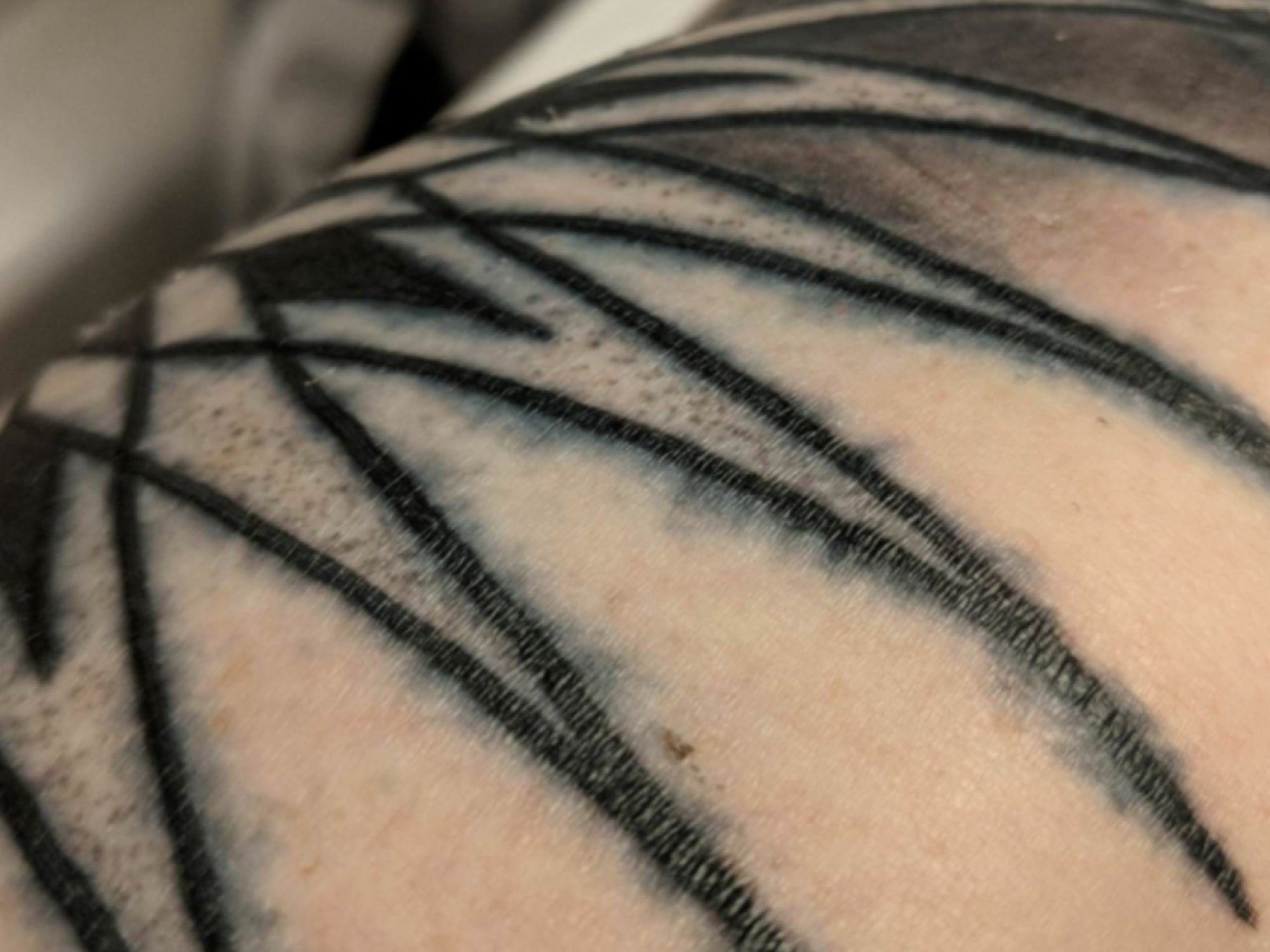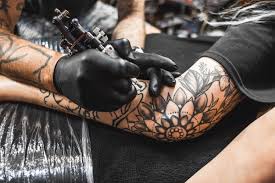If you’ve ever looked at your finished tattoo and seen what resembles a squiggly worm instead of a clean, confident line—you’re not alone. Every tattoo artist, especially beginners, faces the twin nightmares of shaky linework and blowouts. These issues don’t just affect the aesthetics of a tattoo; they can damage skin, client trust, and even your confidence.
But here’s the good news: with the right adjustments, techniques, and training, you can dramatically improve your line quality. In this guide, we’ll walk through three essential methods to solve:
- Hand tremors during tattooing
- Blowouts and blurred lines
- Emotional and technical stress during linework
Let’s dive into how to evolve from shaky squiggles to clean, crisp lines like a master.
1. Stroke Adjustment: The Core of Clean Tattoo Lines
Keyword: tattoo machine stroke, tattoo machine setup
The first culprit behind unclear lines often isn’t your hand—it’s your machine setup. Particularly, your stroke length.
Why Stroke Matters
The stroke (or stroke length) is how far your needle moves up and down during each cycle. For linework, the ideal stroke should offer a balance between ink saturation and skin trauma. A stroke that’s too long can lead to ink blowouts and excessive bleeding, while one that’s too short may struggle to deposit enough ink.
Recommended Stroke for Linework
Keep your stroke under 2.5mm when focusing on precision linework—especially for beginners.
At 2.1mm–2.5mm, you achieve:
- Controlled ink saturation: Ensures the ink is deposited just deep enough without tearing the dermis.
- Smoother hand-eye coordination: Shorter strokes reduce “whiplash” from needle travel.
- Less trauma, less bleeding: Easier healing for the client.
Bonus: Needle Setup Matters Too
Pair a short stroke with:
- Tight needle groupings (like 3RL or 5RL)
- Proper needle depth (around 1–1.5mm into the skin)
- A quality tattoo power supply with consistent voltage (typically 6–8V for lining)
All of these work together to make your lines cleaner, more consistent, and less shaky.
2. The Grip Secret: Hand Techniques That Prevent Shaky Lines
Keyword: tattoo hand technique, beginner tattoo tips
Once your machine is set up correctly, the next issue is you—specifically, how you hold the tattoo machine.
The “Bird in Hand” Grip Technique
There's an old saying in tattoo apprenticeship:
“Hold the machine like you're holding a living bird—firm enough not to let it fly away, but gentle enough not to kill it.”
This metaphor perfectly describes the balance you need in grip pressure. Holding the machine too tight creates tension in your hand and forearm, leading to tremors and jerky lines. Too loose, and your control falls apart.
Pinky Support: The Hidden Anti-Shake Weapon
Here’s a rarely discussed but powerful tip: support your pinky finger on the client’s skin as a stabilizer.
This does three things:
- Anchors your hand, reducing shake.
- Gives your lines direction, as the pinky acts like a compass arm.
- Reduces fatigue, allowing longer sessions without tremors.
If you’re using a tattoo pen, like a rotary tattoo machine, wrapping the grip with self-adhesive tattoo wrap can give you a better hold and reduce slippage.
3. Crisis Control: What to Do When Things Go Wrong
Keyword: tattoo blowout fix, tattoo bleeding problem
Even seasoned tattooists occasionally hit trouble spots. Maybe the client flinches, or your line starts bleeding more than usual. Knowing how to stop, assess, and clean is crucial to damage control.

Signs You’re Pushing Too Hard
If you see:
- Blood pooling around the line
- Ink spreading under the skin
- Skin turning gray or mushy
You're likely causing a blowout or hitting too deep.
Emergency Protocol:
- Pause immediately. Don't try to “fix it” mid-line.
- Clean with green soap, gently dabbing—never scrubbing.
- Switch angles or reduce pressure.
- Lower your voltage slightly to decrease punch force.
Sometimes the best move is to wait—finish the session elsewhere and return to the troubled area later, once it’s had a chance to calm.
4. Mind and Muscle: Building Tattooing Confidence Through Training
Keyword: tattoo practice skin tips, tattoo confidence, tattoo beginner practice
Tattooing is as much psychological as it is technical. A big cause of shaky lines is simple: nerves.
When you doubt yourself, your hand tenses up, your breathing becomes erratic, and your lines suffer. But with the right mental training, you can develop the calm and focus of a tattoo master.
The Long-Line Breathing Technique
Try this during line practice:
- Inhale fully.
- Hold your breath while pulling the line.
- Exhale only after the line is done.
This creates a steady anchor for your body. By reducing motion caused by breathing, your needle glides more predictably across the skin.
The Fake Skin + Vaseline Drill
Here’s a powerful daily exercise:
- Apply a thin layer of Vaseline to practice skin.
- Pull long, straight lines using your full arm—not just your wrist.
- Repeat 10 lines, then wipe gently with tissue.
- Observe your results and adjust.
Bonus tip: Try using different line angles to simulate real tattoo placement (curved arms, legs, etc.).
Additional Tools and Tips to Improve Line Quality
Choose the Right Tattoo Equipment
- Tattoo pens with low vibration (like Neebol F7 or S4) are ideal for beginners.
- Use tattoo kits with adjustable power settings and pre-sterilized needle cartridges.
- Always opt for high-quality tattoo needles with consistent soldering.
Environment Matters
- Keep your workstation clutter-free.
- Use adjustable lighting to reduce eye strain.
- Ensure your chair height and armrest match your body’s comfort zone.
Record and Review
After every session, record your work, zoom in on your lines, and track:
- Where do lines start to shake?
- Are there specific angles that cause trouble?
- Is the blowout happening with certain needles or voltages?
Reviewing your work creates a feedback loop—essential for consistent progress.
From Worms to Winners: Your Tattoo Journey Starts Here
Tattooing clean lines isn’t just a skill—it’s a craft. Like all crafts, it demands patience, precision, and practice.
Whether you're dealing with shaky hands, ink spreading under the skin, or the anxiety of pulling a long straight line, remember: every tattoo master was once a beginner with a trembling hand.
By focusing on:
- Machine calibration (stroke under 2.5mm)
- Proper grip and hand support (the pinky method)
- Crisis handling and cleanup
- Focused breathing and fake skin drills
…you’ll grow faster, build confidence, and tattoo cleaner than ever before.
Ready to take your linework to the next level?
Start by checking your tattoo machine setup, practicing breathing techniques daily, and investing in the right tools like a high-quality tattoo pen, beginner-friendly tattoo kit, and stable tattoo needles.
Clean lines aren’t magic—they’re the result of intention, effort, and the right technique.









Share:
Dragon Tattoo Ideas for Women: Grace Meets Power
Tattoo Sterilization Self-Audit: 5 Overlooked Infection Traps Artists Often Miss